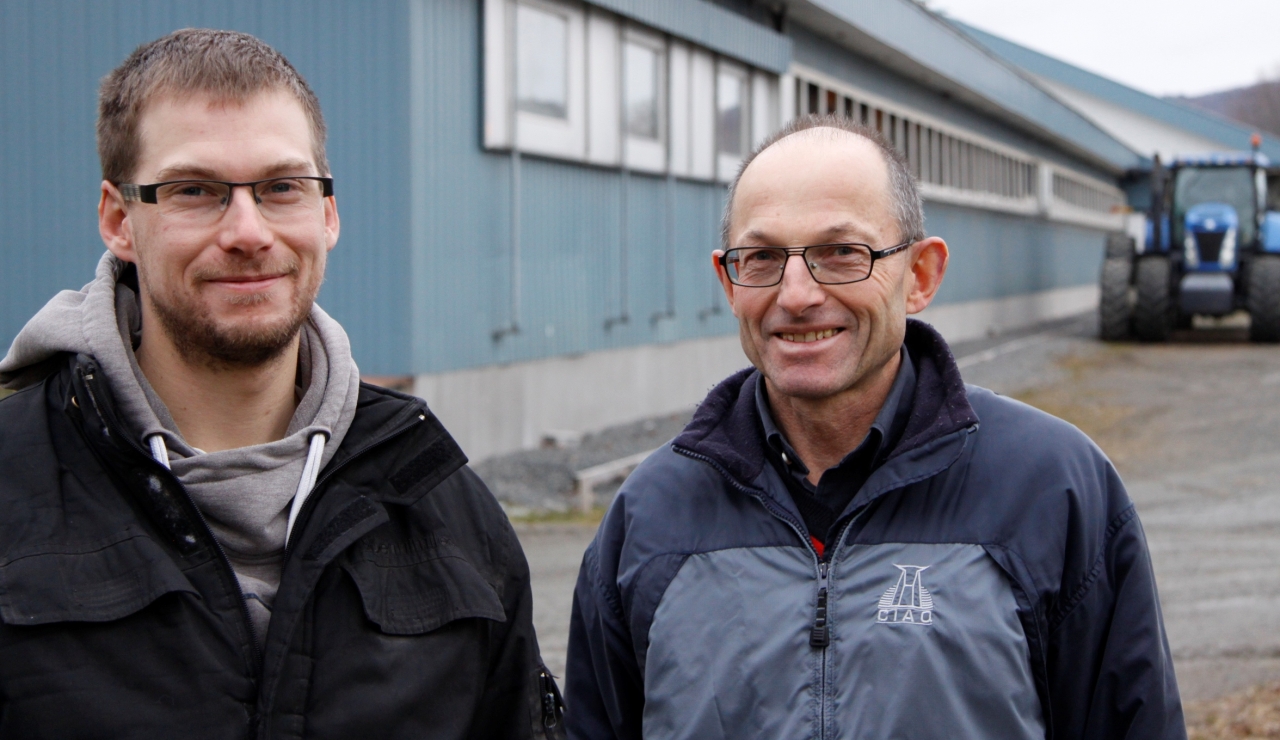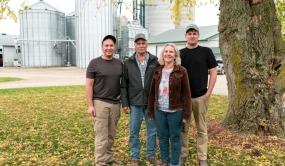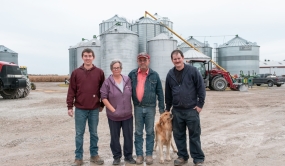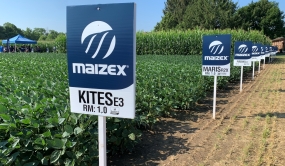Making milk: Quota & Supply management

Photo: Jérémie and Alphonse Pittet, owners of the Ferme Pittet
In the same feature:
Making Milk: Growth & Efficiency
Making Milk: Milk Ingredients
Making Milk: Farm Transfer
FEATURE: MAKING MILK - 3 PROVINCES, 3 PRODUCERS, 3 PERSPECTIVES
Owners of large dairy herds in Quebec, Ontario and Alberta share with us their vision for their operation’s growth and for the future of dairy production in the country.
Quota & Supply management
Battered about, supply management is still holding out. How do you see its evolution? Can we survive without it?
The three producers interviewed are unanimous in saying that it needs to be defended. According to the Lavoies, the decent revenues that the system generates allows them, among other things, to manage their herd well, to produce very high quality milk and to invest in animal welfare, an issue that will be crucial in future years.
Alphonse Pittet defends supply management but isn’t optimistic about its survival in the long run. “I wouldn’t bet that Jérémie will end his career with this system in place,” he says. “Supply management or not, there will be other models.”
“It’s the best system in the world,” believes Nick Thurler. His sons, Robert, 29, and Michel, 24, also share his opinion. “That being said, it has to evolve.”
“Producers should know six months in advance what the system needs for milk,” indicates the Ontario farmer. “They could therefore keep more cows to meet this demand. There is a lack of both milk and quota in the system. We supply the best-paid classes but we neglect those that are paid less. This is why we are struggling to meet the big increase in butter consumption that we are currently experiencing.”
At the same time, the producer says that the price of milk in Canada has increased too quickly over the past 10 years. It needs to meet but not increase more than the rate of inflation. “At 75 or 78¢, everyone can live with that,” believes the South Mountain farmer.
“To improve the system, we can think about merging farmers, or having group farms,” indicates Jérémie Pittet. “But we can’t actually assimilate another farm and its quota. That being said, supporting the start-up of new operations with quota loans is not a good idea. There are already so many good farms to transfer. And the scarcity of quota limits the growth of operations.”
“Keeping supply management just to maintain a high price is a mistake,” estimates Alphonse Pittet. “We can’t be the only ones in the world with a high price. We live in a big village. But if milk falls to the global price, it’s the end of supply management.”
Is the price of quota an ambush-in-waiting for the producers that were interviewed? At almost $36,000 a kilogram in Alberta at the time of writing this article, does this price prevent the growth of dairy farms?
“Those who have money can grow without any problems,” indicates Claude Lavoie. “Quota is available. Producers agree amongst each other on the price to pay.” But it’s a generational perception. For Richard, his father, the price is an obstacle.
Jérémie Pittet views the price cap positively as it helps prevent speculation and overbidding. On the other hand, it limits the growth of operations.
As for Nick Thurler, he would prefer a system without a cap. “The more efficient you are, the more you can pay for quota,” he says.
You can read the entire feature in the February 2016 edition of Le Coopérateur magazine. [in french]
In the same feature:
Making Milk: Growth & Efficiency
Making Milk: Milk Ingredients
Making Milk: Farm Transfers










